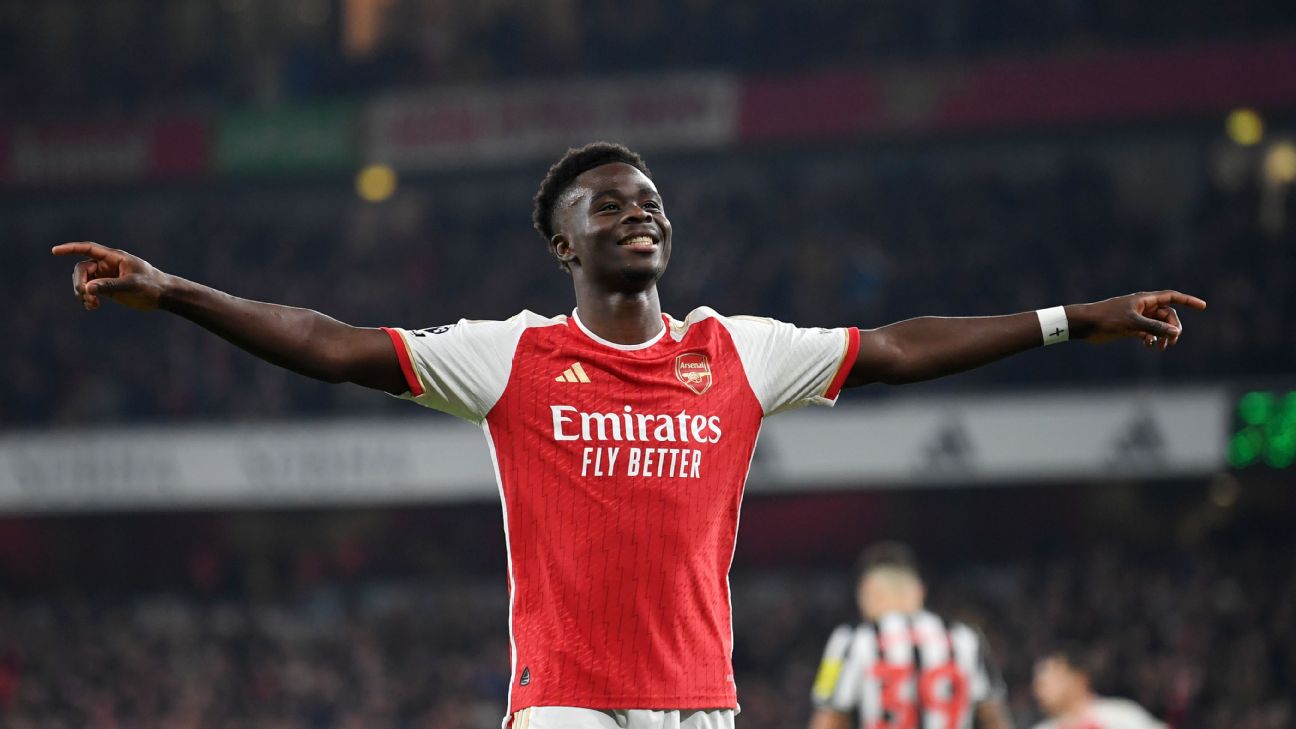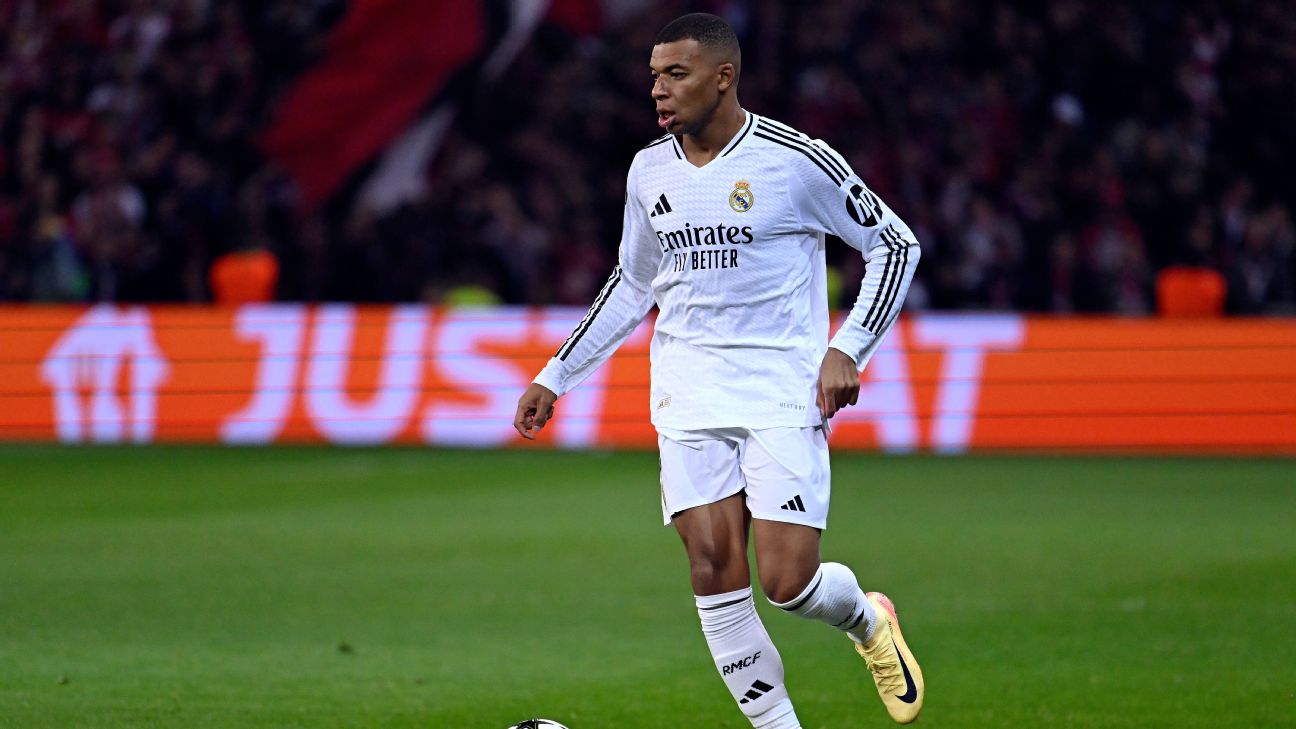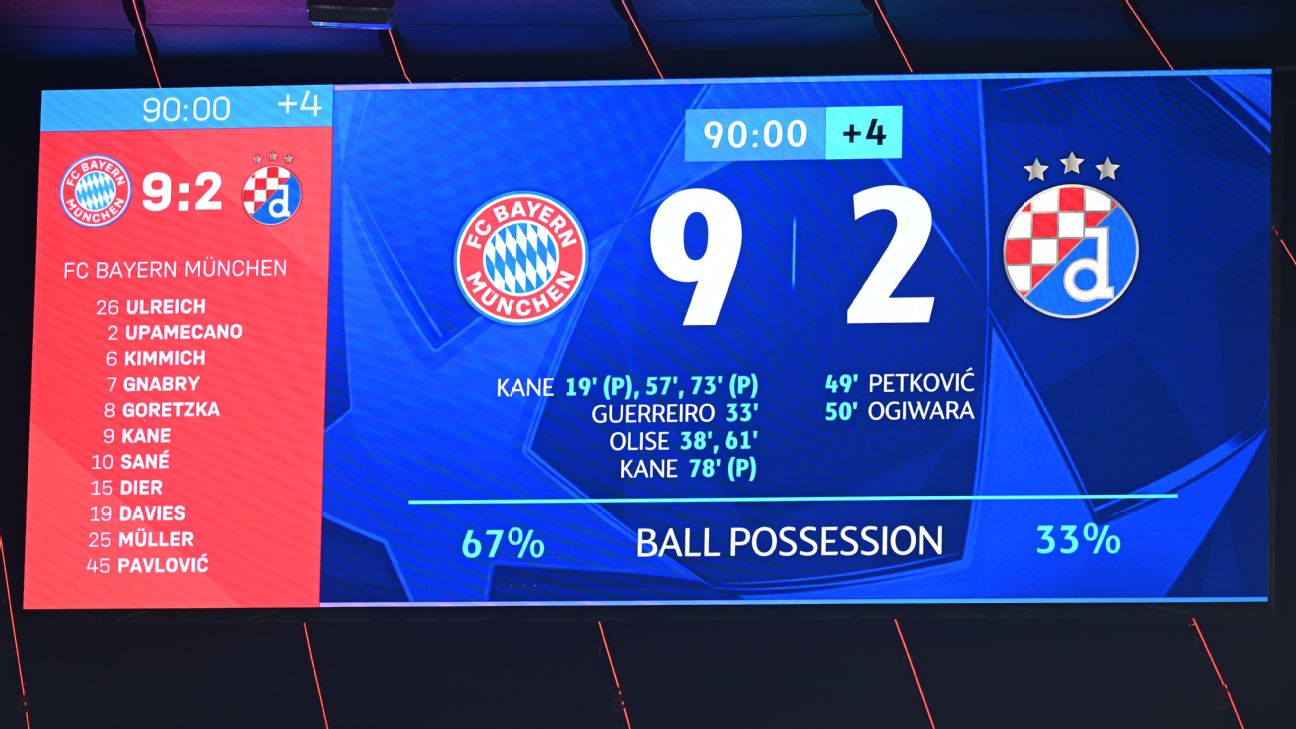A couple days ago, I found myself doing a thing I don’t normally do: agreeing with Rio Ferdinand. Actually, let’s say “half-agreeing” or maybe “quarter-agreeing.”
After Manchester City’s Champions League win over Copenhagen, the former Manchester United defender and current BT Sport commentator claimed that City’s Phil Foden was “world class” and that Arsenal’s Bukayo Saka was not.
At the end of last season, I tried to come up with a systematic-ish way of determining who actually is “world class.” Basically, I decided that at a given moment, there could only be two starting XIs worth of world-class players. Two keepers, four center-backs, four full-backs, two holding midfielders, four advanced midfielders, and six attackers.
If “world class” is going to have any meaning, it should be exclusive. Given that, Phil Foden is not world class, and neither is Saka. Purposefully or not, though, Ferdinand hit a nerve by bringing Saka into the conversation.
Outside of a group of cowards and idiots, everyone loves Saka. I love him. You love him. His teammates love him. His opponents love him; just listen to Manchester United’s Luke Shaw talk about the guy.
Saka’s ascension has mostly been frictionless, too. He debuted as a full-back under Unai Emery, immediately became a full-time starter for Arsenal at 17, then quickly became the most important player on Arsenal, and eventually started for England at a World Cup at 21 years old.
But outside of maybe four players in the past 30 years — Lionel Messi, Cristiano Ronaldo, Kylian Mbappé, and Erling Haaland — there’s always a bit of a struggle to break into that world-class tier. The development goes from top prospect to top player; from there, it takes a bit of time to become a true superstar. In order to be a world-class attacker, at least in a way I’ve defined it, you have to score and create goals at an elite rate, and you have to do it in a way that drives winning at the highest level.
Saka hasn’t quite done that yet, but he’s getting really close.
Great young player or great player?
Saka’s best full season was his most recent full season. Last year, he scored 12 non-penalty goals and registered 11 assists across 3,181 minutes. Per 90 minutes, that comes out to 0.65 non-penalty goals+assists per 90 minutes. Among players with at least 2,000 minutes played across Europe’s Big Five leagues, that ranked 29th. This was the top 10:
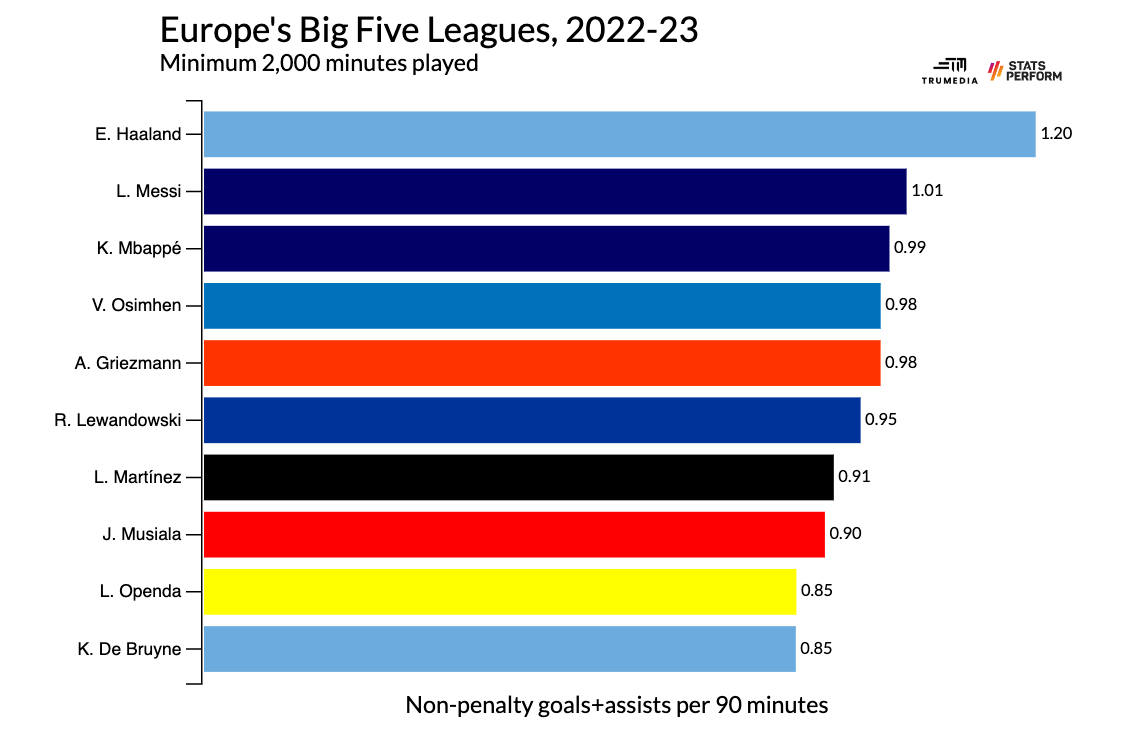
It’s not a one-to-one comparison across leagues, of course. Thanks to its massive financial advantage and its more evenly distributed television revenue, the Premier League is the hardest league to score and assist goals in, on a week-to-week basis. So let’s see where Saka ranked last season, just in his own domestic league:
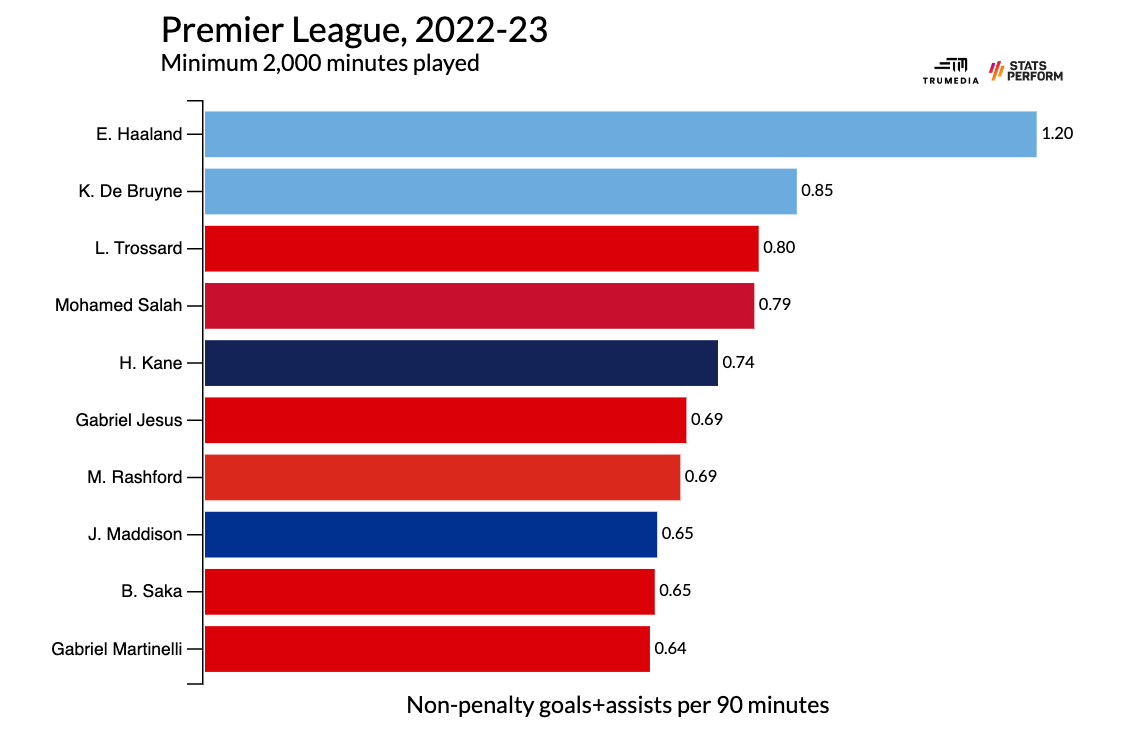
There’s nothing shocking here, broadly: Bukayo Saka was one of the best attackers in the Premier League last season. At the same time, two players on Arsenal alone produced more goals+assists per 90 minutes than Saka did. Gabrielli Martinelli isn’t far behind while Martin Odegaard, a midfielder, would be in the above image if we extended it to 11 players.
On top of that, goals and assists aren’t great predictors of future goals and assists. The quantity and quality of shots you take (or, expected goals) are better representations of what might happen in the future. And assists are largely a product of how well your teammates finished the passes you played to them, so expected assists (the xG value of each shot your passes led to) better represent your creative output.
By xG+xA per 90, Saka ranked 20th in the Premier League last season, at 0.5. Here’s the top 10:
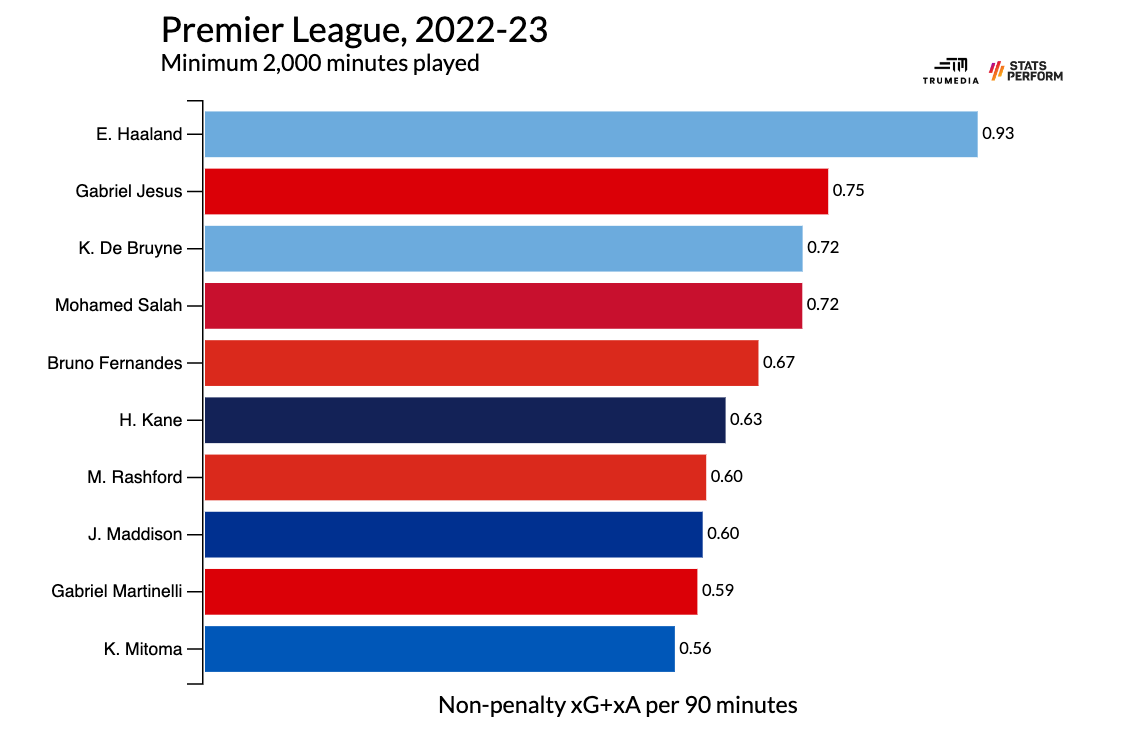
Not only did the Gabriels Jesus and Martinelli produce more high-quality opportunities on goal per 90 than Saka, but so too did Leandro Trossard and Odegaard. And one spot above Saka on the list was his current teammate, Kai Havertz, who was playing for a terrible Chelsea team last season.
Now, Saka was just 20 years old at the start of the 2022-23 campaign. These are fantastic numbers for a player that age, but coming into this season, he was still more of a great young player rather than a truly great player.
How Saka made the leap — even if you can’t see it
By pure goals and assists, it doesn’t seem like Saka has improved much from last season. Among players with at least 1,200 minutes played this season, he ranks 10th in the league in non-penalty goals+assists per 90:

The big difference, though, is that the quantity and quality of shots he’s taking and creating have begun to match up with his goals and assists. Unlike last year, Saka is in top 10 for expected goals and assists per 90 in the Premier League so far this season:
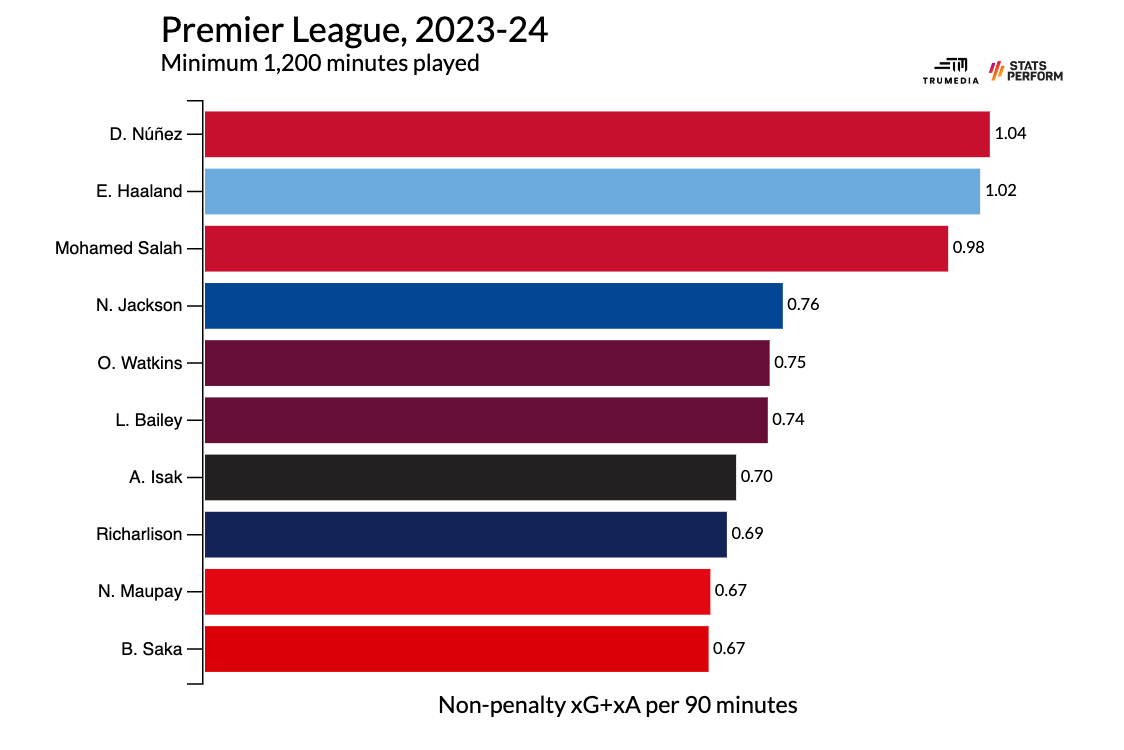
In addition to the rise in Saka’s underlying performance, there’s another big difference from last year to this year: no other Arsenal players are close to him. He’s leading the team in non-penalty goals, assists, non-penalty expected goals, and expected assists. Normalize any of those numbers to per 90 minutes, and he’s still the team leader.
So what’s happening here?
Overall, manager Mikel Arteta has adopted a more conservative approach in possession this season, compared to last. They’re playing fewer passes forward, they’re switching the field far less often, and they’re just moving the ball upfield much more slowly: 1.2 meters per second last season, down to 1.07 meters/second this year.
Outside of Saka, pretty much every attacker on Arsenal is scoring and assisting goals, or taking and creating shots, at a lower rate than last season. The more controlled approach in possession has helped them become the best defensive team in the league, by far: 22 non-penalty goals conceded, 16.9 non-penalty xG conceded — both league-bests. But before the recent goal explosion of the past few weeks, the more deliberate possession style has led to more defenders behind the ball, which has made it harder for the likes of Martinelli and Odegaard to be as productive as they were last season.
Not Saka, though. In an environment in which all of his attacking teammates have found it harder to perform, he’s been even better than last year. And so, I think we’re seeing Saka make the so-called leap — even if it might not seem immediately obvious that he is.
Some hot finishing from himself and his teammates made his around-the-goal impact seem greater than it likely was, but now he’s taking more shots and creating more chances. And he’s doing it within a tactical structure that everyone else has muted everyone else’s output. Were Saka playing for Jurgen Klopp’s attack-until-we-pass-out-now-someone-get-the-defibrilatior-OK-and-we-attack-some-more Liverpool, his individual numbers would likely look even better.
After their recent surge, Arsenal really might just be the best team in the Premier League at the moment. Sure, their two rivals are still ahead of them in the table despite both losing superstar contributors (Mohamed Salah for Liverpool, Erling Haaland for Man City) for extended periods of time, but two points separate third from first and injuries are a part of the game. Here’s how the league currently stacks up, by non-penalty expected-goal differential:
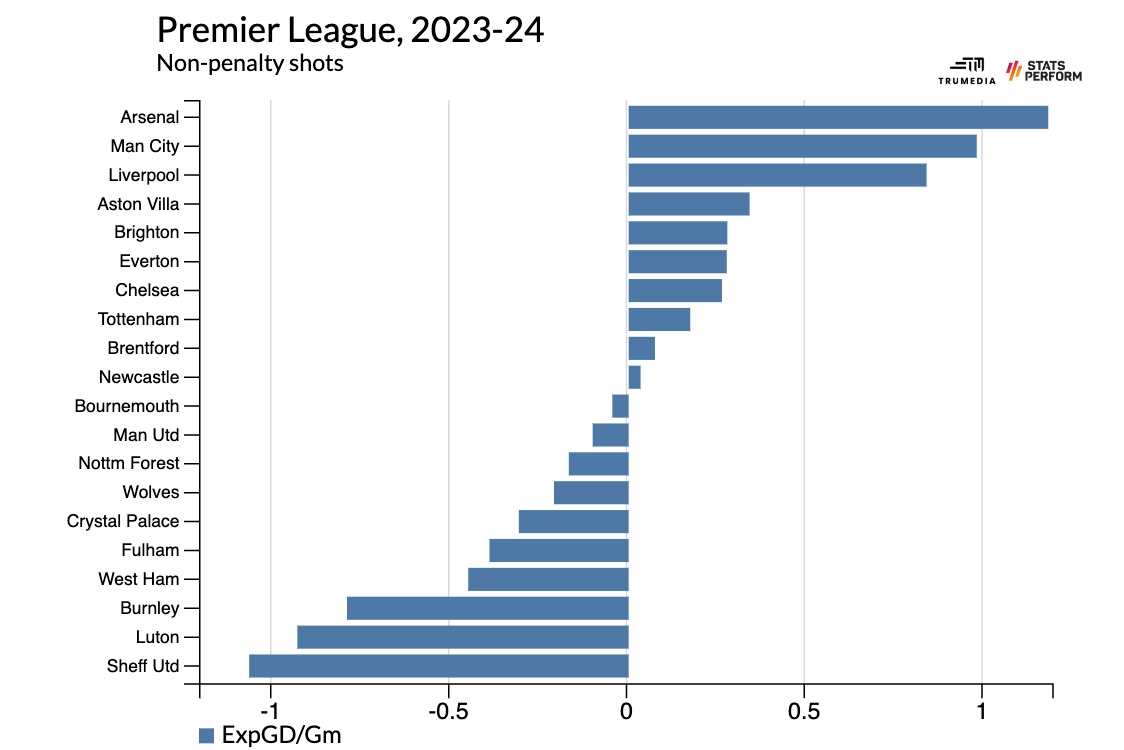
With a great defense on one end and Bukayo Saka being your best creator and your best goal scorer at the same time? You can win the Premier League.
What could Saka become?
We still haven’t talked about all of the other things Saka does. Among all wingers and attacking midfielders in Europe’s Big Five leagues across the last 365 days, he ranks in the 85th percentile in progressive carries, the 93rd percentile for tackles, 96th percentile for touches in the penalty area, and the 98th percentile for progressive passes received.
In addition to carrying the scoring and creating responsibilities for the Gunners, he drives the ball forward at his feet and he does a ton of work off the ball — both to win it back and also to find space to receive forward passes from his teammates. He’s not a perfect player, but he’s kind of the dream model for a high-level attacker. Other guys don’t press or won’t contribute to buildup play or they need to get the ball in space, but you can slot Saka into any team, with any teammates, playing any system, and he’s going to function at a high level.
Oh yeah, and he’s only 22. He won’t be in his prime at the start of a Premier League season until after the next World Cup. So what kind of player might he become?
Craig Burley breaks down everything that went right for Arsenal in its 4-1 win over Newcastle.
The Stats Perform database goes back to 2010. Since then, there are eight individual seasons where a 22-and-under player featured in at least 2,000 minutes and averaged at least 3.0 tackles+interceptions per 90 minutes (adjusted for possession), 6.0 progressive carries, 6.0 touches in the penalty area, and 0.5 non-penalty goals+assists.
Those numbers are all well below Saka’s averages so far this season, but it generally presents a picture of a player who is defensively active, drives the ball forward with his feet, has the ability to find space in the most crowded area of the field, and produces around the goal.
In chronological order, the seasons are as follows:
-
Mario Götze, Borussia Dortmund, 2012-13
-
Ousmane Dembélé, Borussia Dortmund, 2016-17
-
Leroy Sané, Manchester City, 2017-18
-
Vinícius Júnior, Real Madrid, 2021-22
-
Jamal Musiala, Bayern Munich, 2022-23
-
Khvicha Kvaratskhelia, Napoli, 2022-23
-
Bukayo Saka, Arsenal, 2022-23
-
Bukayo Saka, Arsenal, 2023-24
Basically, if you have one of these seasons once, you immediately become one of the most sought-after attackers in the world — and Saka has already done it twice.
If we just bump up the thresholds to match something closer to what Saka is doing this season — above 4 tackles+interceptions and above 8 progressive carries — then the list immediately eliminates everyone other than Saka this season and last season. And that’s without even adding in the goal-scoring or penalty area thresholds.
There are tons of young dribblers out there. Heck, most young attackers are young dribblers. They captivate fans and coaches with their ability on the ball … and then they struggle to ever turn that ability into goals or assists or anything else that actually helps their team win soccer games. However, it’s rare to find a young dribbler who is active defensively. It’s rare to find a young dribbler who scores and assists goals at an above-average rate. To find a young player who does all of that? They barely exist.
The three “older” players in Saka’s statistical cohort don’t feel satisfying: Gotze’s career was derailed by illness. Dembele’s was derailed by injury. And Sane was lights-out in the Premier League for two seasons before tearing his ACL and moving to Bayern Munich, where he’s been great but not as good as he was before the injury. Instead, the natural comparison feels like the player playing the same position for the team currently leading the league: Liverpool’s Mohamed Salah.
Beyond any of his specific on-field skills, Saka stands out in a similar way to Salah: they always play. Over the past three Premier League seasons, four attackers have played at least 7,800 minutes — two of them are Salah and Saka. As for the on-field similarities, beyond the position they share: over that two-plus-season stretch, Salah leads the league with 841 touches inside the penalty area, while Saka sits in second, at 673.
There’s some reason to be scared of all the minutes that Saka has played at such a young age. Salah didn’t break 2,000 minutes in a season until he was 23; Saka has already done it four times. Can his body handle 10 more seasons like that in a row? At the same time, the best predictor of future injury is past injury and Saka hasn’t had any of those, despite playing all the time.
Now, he still has a long way to go to match Salah’s output in front of goal — the Egyptian averages 0.88 goals+assists per 90 minutes across seven Premier League seasons — but Saka’s production around the goal has risen with each season, plus Salah didn’t join Liverpool until he was four years older than Saka is now.
Over time, almost every star attacker starts to make fewer tackles because their coaches want them to hang closer to the goal and be more selective with their energy output out of possession: Press when we lose the ball, but don’t drop back into our own third. Their sheer presence higher up the field is also enough to cause the opposition to play more conservatively, which is its own kind of defensive impact.
That shift seems likely to happen with Saka eventually, too. And if he concentrates his touches around the final third and the opposition box, he’ll probably start scoring more goals and creating more chances. He’s also likely to simply just get better at scoring and assisting goals, regardless of the context.
A left-footed right-winger who can be a part of a great high press, who sits off the back shoulder of the opposition without the ball, who constantly drives the ball into the box, and creates an overwhelming number of shots for his teammates and himself? That’s Salah, and one day, it could be Saka, too.
